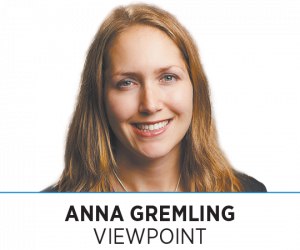Subscriber Benefit
As a subscriber you can listen to articles at work, in the car, or while you work out. Subscribe Now Author Jessie Singer notes that 173,000 Americans die by “accident” each year, the equivalent of more than one fully loaded Boeing 747-400 falling out of the sky every day and killing everyone onboard. According to the Centers for Disease Control and Prevention, Indiana sees about 4,500 accidental deaths annually.
Author Jessie Singer notes that 173,000 Americans die by “accident” each year, the equivalent of more than one fully loaded Boeing 747-400 falling out of the sky every day and killing everyone onboard. According to the Centers for Disease Control and Prevention, Indiana sees about 4,500 accidental deaths annually.
For most of us, those stats serve as little more than a sobering reminder that death often comes as a result of unpredictable, unpreventable circumstances. That’s why we call them accidents, right?
Singer sees things differently. In her book “There Are No Accidents: The Deadly Rise of Injury and Disaster—Who Profits and Who Pays the Price,” she suggests that, too often, the word “accident” is used to dodge responsibility and leave the most vulnerable in harm’s way. In her eyes, the vast majority of “accidents” are quite predictable and preventable.
While Singer’s book examines all kinds of accidental death—from those in coal mines and rural hospitals to opioid overdoes and oil spills—we can see the book’s message played out in vehicle crashes in central Indiana. Pedestrians and cyclists are dying in record numbers due to crashes, and a disproportionate number of the dead are poor or people of color.
So, what must we do to change this scenario?
The higher the speed of a crash, the larger probability of serious injury and death. First, we must accept the role of infrastructure in this problem. Singer’s book argues that “you cannot prevent human error, but you can control the built environment to prevent injury and death.” So, we must work to create safe thoroughfares, considering the needs and safety of everyone, whether they are in vehicles, on bicycles or walking and regardless of their race, status or ZIP code.
To this end, the Indianapolis Metropolitan Planning Organization’s Transportation Policy Committee in August adopted the 2022 Vision Zero Resolution, which states that the only acceptable level of traffic deaths or serious injuries on our roadways is zero. It sets a near-term goal of reducing serious and fatal crashes 35% by 2040 as a realistic step toward reaching zero in the long term.
The Safe Streets and Roads For All Action Plan is a first step toward securing additional federal funding for infrastructure improvements that will prevent death and serious injury on central Indiana roads and streets. The newly released IMPO Vision Zero Toolkit is a resource available for communities to guide them in formulating policies to reach a goal of zero traffic fatalities.
The toolkit focuses on plans, policies and design strategies that can be implemented at the local level. It acknowledges that, at the local level, infrastructure is the best means of supporting Vision Zero; it offers a series of design interventions and ways to reach the goal. The toolkit includes resources such as key information, easy-to-implement planning strategies, sample Vision Zero policies, design strategies for reducing dangerous speeds, and customizable communication tools and strategies. Anyone can pick up the toolkit and use parts of it to make their communities safer.
Crashes happen, but as Singer points out, these are not accidents but are choices we make in policy and design. Let’s put an end to those “accidents” and their inequities and work to prevent the deaths of thousands of Hoosiers each year. The IMPO Vision Zero Toolkit is a unique resource available to streamline adopting and implementing a plan and policies to eliminate traffic fatalities.•
__________
Gremling is executive director of the Indianapolis Metropolitan Planning Organization.
Please enable JavaScript to view this content.

Bravo! Now, if the Indiana General Assembly would just get out of the way and instead provide real support communities may be able to reduce the loss of lives.
while i applaud the “vision”, zero is not reality…ever. there is no such thing as zero risk unless we never leave our homes, ever.
again, reduce risk and deaths where possible but “pursuit of zero” will harm more than help.
let the dialogue and ideas continue but with the reality that the w entire world operates with risk